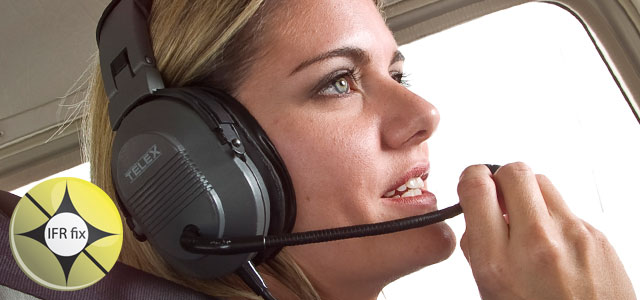
An aircraft is on the ground after a flight to a nontowered airport. The pilot is on the radio, attempting to cancel the IFR flight plan.
The glitch: The transmission is going out on the common traffic advisory frequency. ATC doesn’t hear it.
Up in the stuff, another aircraft requires an ILS approach to the same airport. Gas is getting low, so the pilot isn’t pleased to receive holding instructions with a clearance to 4,000 feet.
The pilot calls “minimum fuel,” and informs ATC about the radio problems playing out on the ground. ATC requests that the pilot instruct the aircraft that landed to call on the proper frequency, but the pilot—“too busy”—declines.
“That's when I noticed he was descending through 3,400 feet and had not entered holding,” said the controller in a nail-biting Aviation Safety Reporting System report.
Sounds like the apocryphal hangar story about an unclosed IFR flight plan—but it really happened.
Fortunately, the aircraft on the ground got straight with the radios, and canceled. The straying aircraft up above climbed back to 4,000 feet, shot the approach, and landed.
But all it took was a cross-channeled radio to blockade the airspace and breed bedlam.
On any IFR flight in moderate weather, pilots face the decision: Cancel aloft, possibly speeding up the arrival, or remain on the IFR flight plan to touchdown. Landing at a nontowered airport? Remember that you will have to cancel on the ground by uncertain means.
You don’t get all day to decide. That’s because it’s necessary to call “while still airborne and able to communicate with ATC by radio,” as the Aeronautical Information Manual’s Section 5-1-15 reminds. “This will not only save the time and expense of canceling the flight plan by telephone but will quickly release the airspace for use by other aircraft.”
A Bonanza pilot pondered the pluses and mused the minuses in a safety filing after failing to establish two-way communications on the ground at phoneless Orange County Airport in Montgomery, N.Y. (The pilot canceled by phone from an office three miles away, barely heading off activation of search and rescue.)
“I should have canceled in the air on final approach,” the pilot wrote. “Of course, the problem [with that] is, had there been an accident, no one would have had a reason to investigate.”
Earning an instrument rating is guaranteed to be one of the most challenging, rewarding, and fun projects a pilot takes on during a lifetime in aviation. Each week, this series looks at the IFR experience from a new perspective. Catch up on what you may have missed in the IFR Fix archive.



